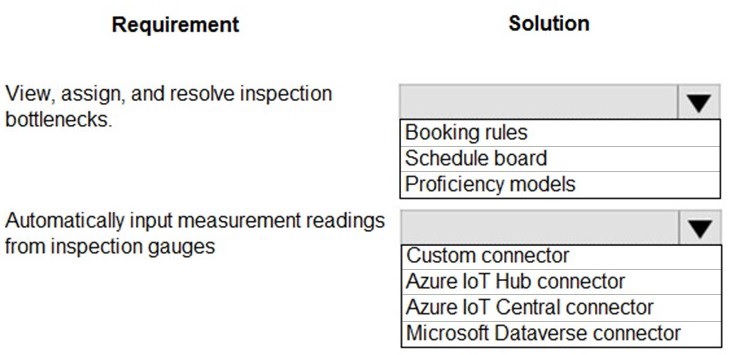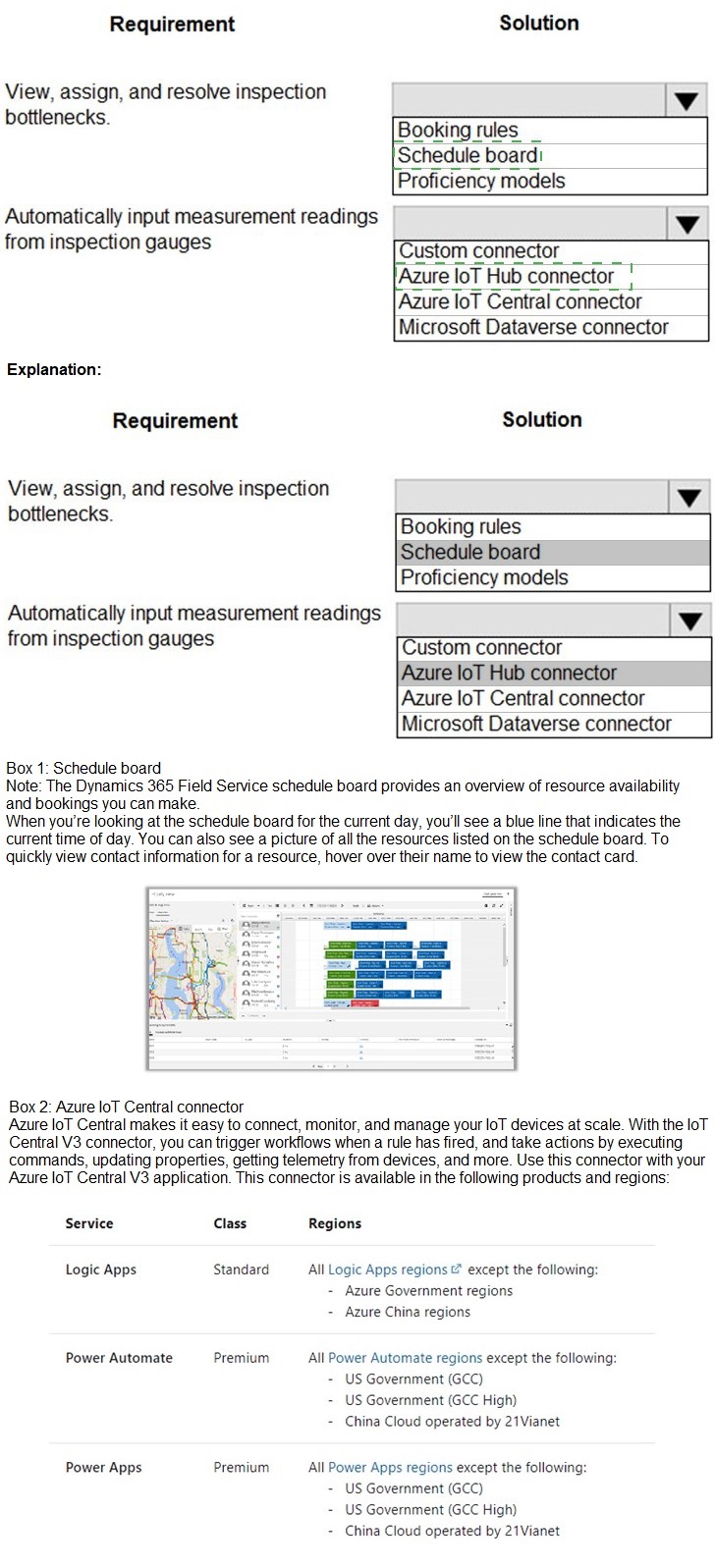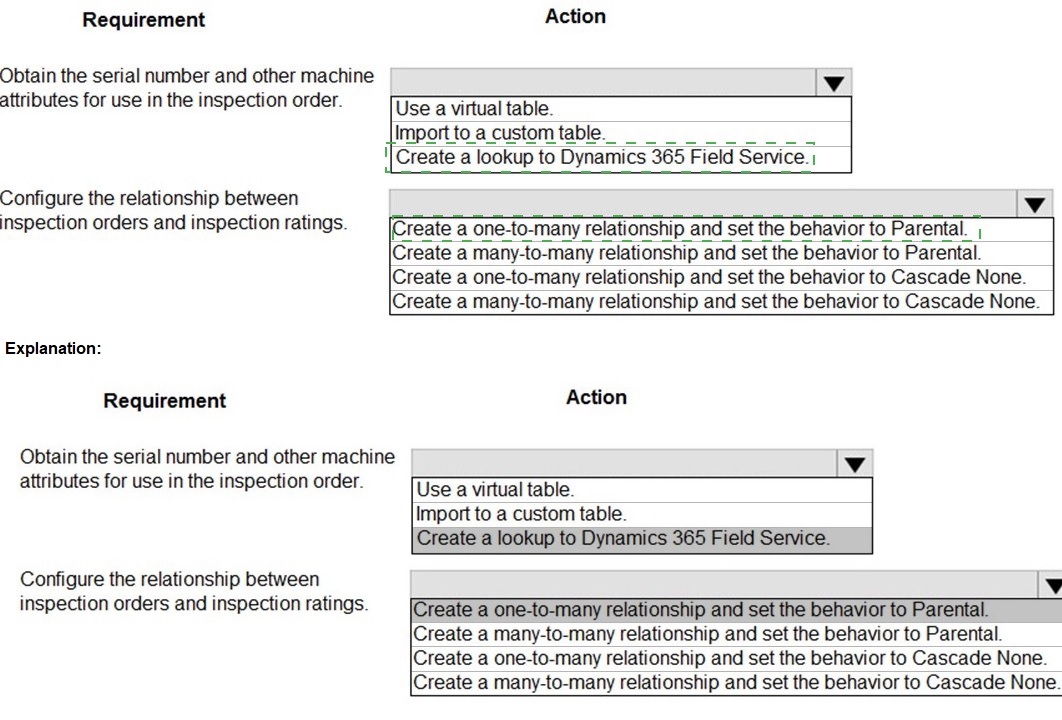
- Email support@dumps4free.com

Topic 3: Fabrikam, inc.
Case study
This is a case study. Case studies are not timed separately. You can use as much
exam time as you would like to complete each case. However, there may be additional
case studies and sections on this exam. You must manage your time to ensure that you
are able to complete all questions included on this exam in the time provided.
To answer the questions included in a case study, you will need to reference information
that is provided in the case study. Case studies might contain exhibits and other resources
that provide more information about the scenario that is described in the case study. Each
question is independent of the other questions in this case study.
At the end of this case study, a review screen will appear. This screen allows you to review
your answers and to make changes before you move to the next section of the exam. After
you begin a new section, you cannot return to this section.
To start the case study
To display the first question in this case study, click the Next button. Use the buttons in the
left pane to explore the content of the case study before you answer the questions. Clicking
these buttons displays information such as business requirements, existing environment,
and problem statements. If the case study has an All Information tab, note that the
information displayed is identical to the information displayed on the subsequent tabs.
When you are ready to answer a question, click the Question button to return to the
question.
Background
Fabrikam, Inc. manufactures industrial metal cutting machines. The company installs and
services the machines for customers.
Fabrikam has manufacturing plants in Canada, France, and China. The company also has
regional service organizations that are responsible for installation and maintenance of the
machines.
Current environment
Overview
Operations for the company are managed very informally. Only a small number of long term employees are aware of all manufacturing processes. The company has been
experiencing quality issues associated with its manufacturing operations and installations.
The company wants to implement a way to capture quality inspection results for each
machine produced. Current inspection checklists are stored in the Files section of a Teams
channel for inspectors. Inspectors commonly print the incorrect inspection checklist.
The company has specific inspection stations for certain inspection steps. Each station has
the gauges and equipment required for related inspection steps. There is often a backlog at
specific inspection stations. This results in delays in shipping machines to customers.
Accounting system
The current system does not handle shop floor or manufacturing planning
functionality.
Machines are assigned serial numbers and placed in stock until they are shipped
to customers.
Employee information is maintained only within the accounting system. Access to
the information is strictly controlled due to privacy regulations and company
policies.
Other systems
The company has an enterprise Microsoft 365 subscription. The company uses
Microsoft 365 only for sending and receiving email. The company uses photos of
employees to generate employee badges. Photos are uploaded into Microsoft 365
user profiles.
The company recently started using Dynamics 365 Field Service to manage and
maintain the machines that it installs for its customers. The app has not been
customized.
The company has added roles, skills, and certification proficiencies to Dynamics
365 Field Service resources to support both customer onsite inspections and final
manufacturing inspections.
Requirements
Quality inspection app
Fabrikam is evaluating Microsoft Power Platform to determine whether it can meet the
company’s requirements for a manufacturing defect and quality inspection solution. Each
machine produced must be subjected to a quality inspection at various points during
production. Each machine must undergo a more extensive quality inspection before the
machine can be shipped to the customer.
Inspection orders
Inspection orders must:
Inspectors must fill in findings comments and upload at least one photo for any
inspection step that is marked as failed.
Inspection standardization Standardized checklists must be stored in the solution for use by inspectors. A copy must
be created when a new inspection is initiated. The solution must:
Prevent an inspector from proceeding to the next step of the checklist until
required information for a step is entered.
Support the addition of steps to inspections to support custom features added to a
machine for a customer.
Support the direct input of measurements from testing gauges to avoid incorrect
readings being entered by inspectors.
Provide a visual representation of the testing measurement limits for each step.
Include an indication of how the measured value compares to measurement limits
and whether the measurement is within tolerance. Users must be able to configure
the visualizations to display the minimum value and maximum value, and whether
the reading is within the tolerance of a single targeted value. It must also be able
to be used for maintenance inspections once the machine has been installed.
Support the ability to store photo references within each inspection step to
document defects found during inspections.
Security
Users must be active employees of Fabrikam.
When a user signs into the inspection solution, the solution must display a picture
of the employee who has signed in.
Supervisors must be able to modify standard checklists. Other employees must be
prevented from modifying checklists.
You must prevent users from changing inspection order data once an inspection is
marked as final.
Analytics and reporting
The solution must:
Provide metrics including existing and upcoming demand by inspection station,
average time spent per user at a station, and average time a machine spends at
each inspection point.
Provide metrics per inspector including number of inspections performed by
month, and number of inspections per rating type (pass, fail).
Provide a printed quality certificate to be included with each machine.
Issues
During initial testing of the solution, testers report that they cannot see the photos taken
during a previously failed inspection.
You need to recommend solutions to meet the integration requirements.
What should you recommend? To answer, select the appropriate options in the answer
area.
NOTE: Each correct selection is worth one point.


You need to resolve the issue reported during testing.
What should you do?
A.
Create an image data type within the Inspection Order table.
B.
Create a relationship within the Inspection Order table to the originating inspection
order
C.
Create a Quick View form for the inspection order.
Create an image data type within the Inspection Order table.
Need to store the image in the table.
Scenario: The company uses photos of employees to generate employee badges. Photos
are uploaded into Microsoft 365 user profiles.
You need to recommend a method for transferring machine information to Dynamics 365
Field Service.
What should you recommend?
A.
Microsoft Dataverse connector
B.
Dual-write
C.
Lifecycle Services
Microsoft Dataverse connector
Scenario: Information about each machine produced must be transferred to Dynamics 365
Field Service.
Use the Microsoft Dataverse connector when connecting to the Microsoft Dataverse used
for Microsoft Dynamics 365 Sales, Microsoft Dynamics 365 Customer Service, Microsoft Dynamics 365 Field Service, Microsoft Dynamics 365 Marketing, and Microsoft Dynamics
365 Project Service Automation.
Reference:
https://docs.microsoft.com/en-us/powerapps/maker/canvas-apps/connections/connectiondynamics-
crmonline
You need to design the quality inspection order data model.
What should you recommend? To answer, select the appropriate options in the answer
area.
NOTE: Each correct selection is worth one point.


Box 1: Create a lookup to Dynamics 365 Field Service
Scenario: Machines are assigned serial numbers and placed in stock until they are shipped
to customers.
Entity lookup: Allows technicians to choose a Dynamics 365 record. In the inspection
designer interface, admins must select an entity and a field to display. For a chosen entity,
the Name field and mandatory fields are the entity attributes that can be displayed in the
lookup.
Box 2: Create a one-to-many relationship and set the behavior to Parental
Scenario: Inspection orders must:
Allow entry of quality ratings of passed or failed for each quality metric identified
for the machine being rated.
Be automatically marked as failed if one inspection step rating is marked as failed.
Each inspection order can have one or many inspection steps, and each inspection step
has a rating.
Note: Each pair of tables that are eligible to have a 1:N relationship can have multiple 1:N
relationships between them. Yet usually only one of those relationships can be considered
a parental table relationship.
You need to recommend a solution for creating the initial inspection checklists.
What should you recommend?
A.
Power Apps Maker portal
B.
Dataverse for Teams
C.
Power Apps Studio
D.
Data Migration utility
Dataverse for Teams
Scenario: Standardized checklists must be stored in the solution for use by inspectors. A
copy must be created when a new inspection is initiated.
Dataverse for Teams – built on Microsoft Dataverse – provides relational data storage, rich
data types, enterprise-grade governance, and one-click solution deployment to the
Microsoft Teams app store.
Dataverse for teams table creation has all of the things that are great about Microsoft Lists,
without the major downsides.
Reference:
https://docs.microsoft.com/en-us/powerapps/teams/create-table
| Page 6 out of 21 Pages |
| Previous |